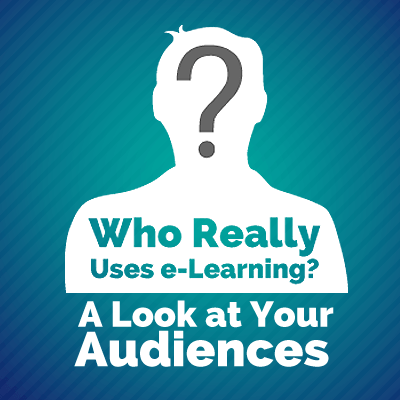How to Effectively Analyze your eLearning Course Audiences
Developing an eLearning course that offers informative, well written content, and high quality design elements are essential to any successful eLearning project. However, knowing your audience can make the difference between an effective eLearning course and an eLearning course that falls short of expectations (even if you've spent countless hours and resources creating a unique eLearning course). As such, one of the most invaluable eLearning tasks at your disposal as an Instructional Designer is an eLearning course audience analysis. Here are the 6 key questions you will have to ask in order to effectively analyze your eLearning target audience:
- What is the primary goal or objective of your eLearning audience?
Your eLearning audience is enrolling in your eLearning course or singing into your training program for a purpose. In order to develop an eLearning course that will be effective and worthwhile, you must predetermine what this purpose is. Are you designing eLearning courses that are aimed at helping learners to delve into a particular topic? Are you teaching a specific task, such as POS transactions or IT trouble shooting? One of the most important aspects of an audience analysis is recognizing what your audience hopes to take away throughout the experience. This will allow you to determine not only which content must be included, but also how you are going to present this content in a meaningful and effective way. For example, if the learners hope to learn about customer service basics, you may want to include interactive scenarios that will enable them to carry out real-world simulations before they venture onto the sales floor. So, what are your audiences' expectations, and how can you live up to these particular expectations when designing your eLearning course? - What are your learners’ educational background and/or learning abilities?
Learners carry their own unique cultural and educational background, as well as their own set of learning prerequisites or abilities. Nonetheless, there are probably some aspects of their background that they have in common. For example, if you are creating an eLearning course that deals with more advanced management strategies, then your target audience is most likely going to already have a basic understanding of human resources and/or personnel development. As such, you won't need to cover these fields in depth in your eLearning course. You will also want to do some research and determine the educational background of your audience, or the professional training that they have undergone in the past. What is their level of on-the-job experience? Are they literate, and are they familiar with professional jargon? Are they going to be able to comprehend the concepts you are including, or should you be presenting the content in a more simple and straightforward way? Keep in mind that the ultimate goal is to deliver invaluable knowledge that the learner will be able to acquire, retain, and recall. Therefore, you'll want to deliver the content in a fashion that appeals to them and motivates them to learn, rather than designing an eLearning course that is too simplistic or too challenging. - When and where will the learners be learning?
It's crucial to identify their primary location while taking the eLearning course, so that you can take that into consideration when you design it. To illustrate, will they be in a public place where audio may not be available? Will the eLearning course be offered as on-the-job training, meaning that all of the information should be “bite sized” so that they can complete it during a working day? Determining how the learner will access the information is as essential as pinpointing what content you will include.Ace your eLearning Course with the best Bite-Sized Content Solutions!Find, choose and compare the top eLearning Content Development Companies for Microlearning! - What information and skill-sets will the learner need to acquire?
One of the most vital elements of analyzing eLearning audiences is determining which skill-sets or information must be acquired during the eLearning course. If your eLearning course will be offered as part of a new-hire orientation, you will probably need to include an introduction to company policies and basic job training. Likewise, does the audience need to learn about essential customer service or sales skills? To acquire the information you need, you may even want to learn about their job responsibilities so that you are able to include necessary skill or task-specific development tools in your eLearning course design. If you aren't familiar with their professional duties, you may want to speak with someone who is in the field or has recently received training in that niche. - What are your audiences’ technical requirements (or limitations)?
When designing your eLearning course, it is also important to think about how the learners will be accessing the content. Are they going to be signing into the eLearning course via a mobile device? Do they have limited access to Internet, in which case they may prefer a CD-based eLearning course? What are their hardware or software limitations? Most importantly, are they tech savvy, or will you need to make the eLearning course more basic in order to provide them with the most benefit? - What is your audiences’ learning preferences?
Lastly, but equally important, you may want to consider how your audience learns. Some learners tend to gravitate more towards scenario-based learning, while others prefer watching video lectures. Determining the learning preferences of your eLearning course audience is crucial to the overall success of your eLearning course design. It will allow you to custom tailor your modules to meet their needs and appeal to their preferred learning methods, so that they achieve the best possible outcome.
Want to learn more about assessing your eLearning audience? The article 5 Ways to Effectively Assess your eLearning Course Audience highlights 5 ways that can help design eLearning deliverables that meet their objectives and offer an overall invaluable eLearning experience to your learners every time!
Also, if you are looking for ways to keep your audience engaged, the article 9 Top Tips To Engage Your Learners in eLearning features 9 tips that can help you to keep your learners interested and excited about your eLearning course from start to finish.
Last but not least, you may find valuable the Ultimate eLearning Course Design Checklist and the Awesome e-Learning Course Guide.








